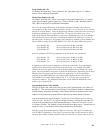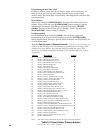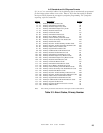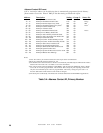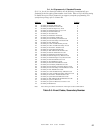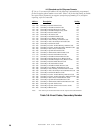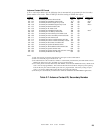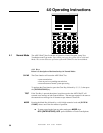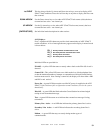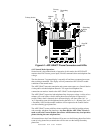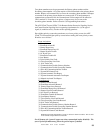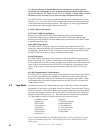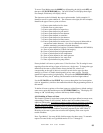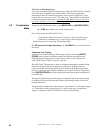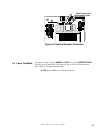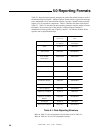Document 50934 Rev B 5/15/00 PN 50934:B
31
This key along with the Up Arrow and Down Arrow keys, are used to display ADT-
UDACT fault conditions. Press the 1st Event key at any time to display the first event
that occurred.
Use the Down Arrow key to view other ADT-UDACT fault events (older) that have
occurred and are active - not cleared yet.
Use the Up Arrow key to view other ADT-UDACT fault events (newer), that have
occurred and are active - not cleared yet.
See individual mode descriptions in other sections.
4.1.2 Displays:
Four 7-segment red LED characters provide visual annunciation of ADT-UDACT
trouble conditions. A list of messages that may appear on the display in normal mode
is shown below:
1st EVENT
DOWN ARROW
UP ARROW
[ENTER/STORE]
Primary Number Communication Fault
Secondary Number Communication Fault
Primary Phone Line Fault
Secondary Phone Line Fault
PH_1
PH_2
no_1
no_2
Individual LEDs are provided for:
EIA-485—A yellow LED that turns on steady when a fault on the EIA-485 circuit is
detected.
Comm. Fail—This yellow LED turns on to indicate the loss of both telephone lines
or that the maximum number of attempts to communicate with both Central Stations
has been unsuccessful. Note: During a comm fail, the display will show either a PH1
and PH2 or no1 and no2.
Power On—A green LED that remains on while DC power is supplied to the ADT-
UDACT. If this indicator fails to light under normal conditions, service the system
immediately.
Kiss-Off —A green LED that blinks when the Central Station has acknowledged
receipt of each transmitted message.
Test—A green LED that turns on to indicate that a manual test message is being
transmitted.
Primary Line Active—A red LED that indicates the primary phone line is active.
Secondary Line Active—A red LED that indicates the secondary phone line is
active.
Modem —A green LED that stays on steady during modem types of
communications.



